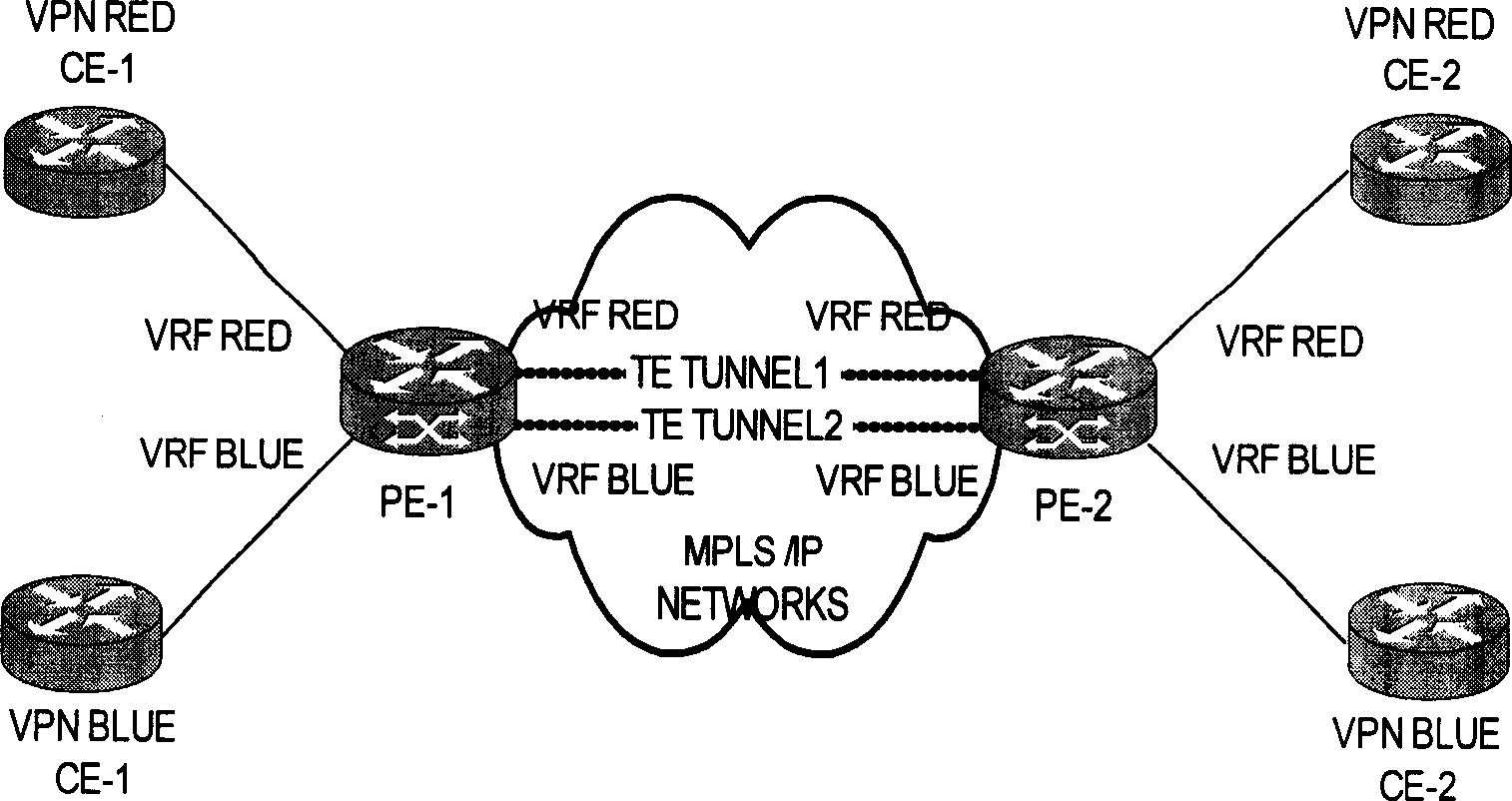Method for implementing bidirectional flow engineering tunnel
A traffic engineering and tunneling technology, applied in the communication field, which can solve the problems of GRE tunnel without bandwidth guarantee, complicated implementation and configuration, and inability to provide VPN services.
- Summary
- Abstract
- Description
- Claims
- Application Information
AI Technical Summary
Problems solved by technology
Method used
Image
Examples
Embodiment Construction
[0044] The present invention provides a method for realizing a two-way traffic engineering tunnel, and its main idea is: referring to the GRE two-way tunnel implementation mechanism, using the TE tunnel source address, destination address and TE tunnel name carried in the RSVP-TE protocol message to realize two-way Binding of two unidirectional TE tunnels. At the same time, in order to ensure that the EGRESS node of the TE tunnel can identify the data packets transmitted by different TE tunnels, RSVP-TE cannot use the second-to-last hop pop-up mechanism when the label distribution is performed on the EGRESS (egress) node, and distributes ordinary labels. Packets of different TE tunnels still carry different labels assigned by EGRESS after arriving at the EGRESS node.
[0045] Embodiments provided by the present invention, such as figure 1 shown, including:
[0046] Step 101, setting a binding object in the existing standard RSVP-TE protocol for setting a binding identifier. ...
PUM
 Login to View More
Login to View More Abstract
Description
Claims
Application Information
 Login to View More
Login to View More - R&D
- Intellectual Property
- Life Sciences
- Materials
- Tech Scout
- Unparalleled Data Quality
- Higher Quality Content
- 60% Fewer Hallucinations
Browse by: Latest US Patents, China's latest patents, Technical Efficacy Thesaurus, Application Domain, Technology Topic, Popular Technical Reports.
© 2025 PatSnap. All rights reserved.Legal|Privacy policy|Modern Slavery Act Transparency Statement|Sitemap|About US| Contact US: help@patsnap.com


